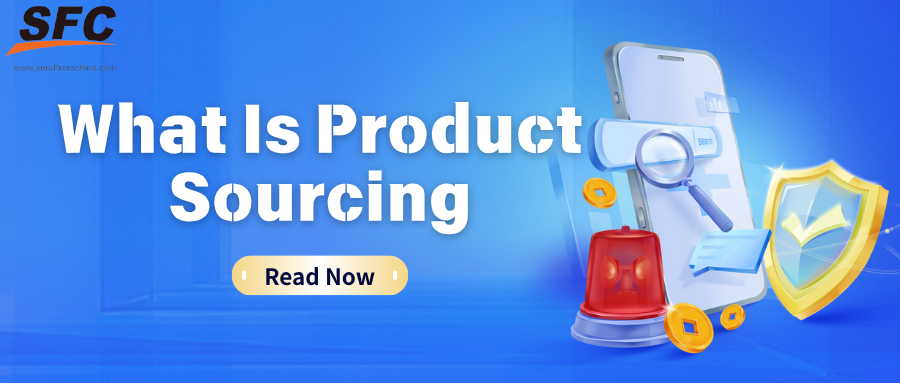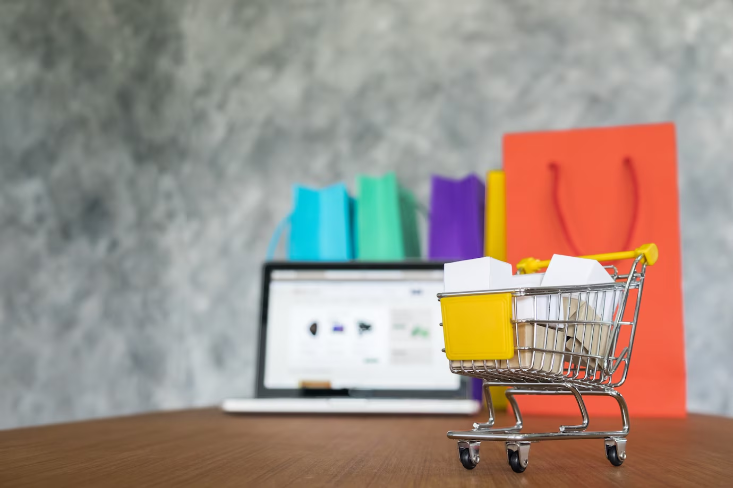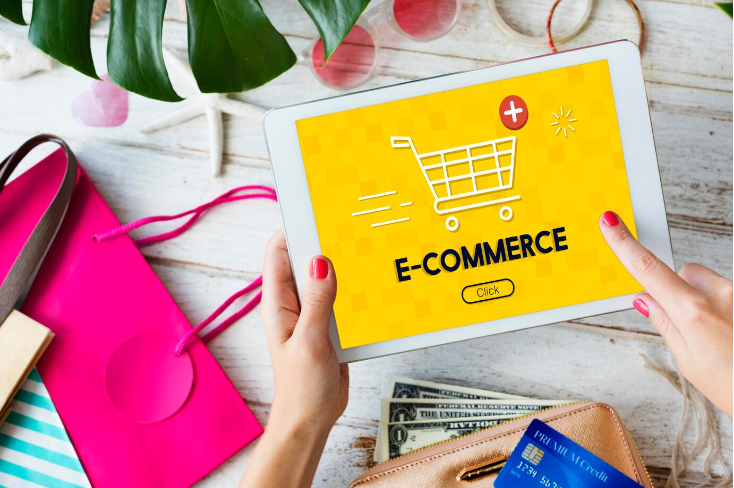Table of Contents
What Is Product Sourcing and How to Sourcing Product for Your Business
Time: Jul 18,2025 Author: SFC Source: www.sendfromchina.com
Product sourcing can make or break your business. Imagine finding the perfect product—but once your customers place orders, the quality drops, delivery times stretch, and your margins vanish. What started as a promising opportunity becomes a logistical nightmare.In this guide, you’ll learn exactly what product sourcing is, why it underpins every successful retail or e-commerce operation, and which sourcing strategies—from direct factory partnerships to dropshipping—are worth knowing about. We’ll cover where to find reliable suppliers around the globe, walk through each step of the sourcing process, and explain why diversifying suppliers is essential.
By the end of this article, you’ll be equipped with actionable insights to select the right sourcing method, navigate common challenges, and build a resilient supply chain that elevates your brand and protects your bottom line.

1. What Is Product Sourcing?
Product sourcing is the strategic process of finding, evaluating, and acquiring the physical goods you’ll sell—whether you're a retailer, e-commerce store, or manufacturer. That means researching products, comparing suppliers, negotiating price and delivery, checking samples, and securing reliable inventory. While it seems straightforward—buy low, sell high—it involves complex steps like supplier vetting, quality control, logistics, and long-term relationship-building.2. Why Product Sourcing Matters?
Product sourcing matters deeply because it shapes nearly every facet of your business—from costs and quality to resilience and brand perception. Let’s dive into why it's a strategic imperative.
Cost Optimization & Margin Management
Effective sourcing isn’t just about finding the lowest price—it’s about reducing your total cost of ownership (TCO), encompassing purchase, logistics, storage, and quality-related expenses. Companies that negotiate thoughtfully not only pay less upfront but also reduce long-term overhead, boosting profit margins significantly.Product Quality & Brand Reputation
Your supplier’s quality controls directly affect your product’s consistency and dependability. Poor quality can damage brand equity and customer trust. A rigorous sourcing strategy ensures you vet suppliers carefully and partner only with those meeting your standards—bolstering customer satisfaction and loyalty.Supply Chain Resilience & Risk Mitigation
A robust sourcing approach reduces vulnerabilities from geopolitical tensions, natural disasters, or sudden tariffs. For instance, Batteries Plus shifted from 32% to 4% China dependence and diversified into Vietnam, Malaysia, and the U.S. to combat tariff exposure—preserving profitability and supply continuity.Efficiency & Competitive Advantage
Strategic sourcing enables smoother inventory planning, optimized logistics, and tightly controlled operational processes. With clean, integrated sourcing workflows, businesses eliminate delays, align supplier performance, and ensure products hit the market faster.Innovation & Strategic Supplier Partnerships
Viewing sourcing as a partnership fosters collaboration, shared product development, and innovative breakthroughs. For example, strategic alliances within supply chains have helped brands drive sustainability—such as Gobi Cashmere vertically integrating for improved traceability and environmental control.Ethical, Sustainable Sourcing
Today's consumers—and regulators—expect more than low prices. Ethical sourcing, including certifications like FairTrade or Forest Stewardship (FSC), builds brand trust, lets you command premium prices, and reduces reputational and compliance risks.Scalability & Strategic Growth
A well-designed sourcing model supports future expansion. By aligning suppliers with your goals—whether launching new product lines or entering new markets—you avoid bottlenecks and scale confidently.3. Main Product Sourcing Methods
When it comes to sourcing products, there’s no one-size-fits-all solution. Choosing the right method depends on your business goals, budget, brand strategy, and risk tolerance. Below are the key approaches most commonly used in retail and e‑commerce.
Direct Sourcing from Manufacturers
You partner directly with factories to produce goods—whether entirely from scratch, custom-designed, or rebranded.Pros:
- Competitive unit costs: Without middlemen, you often get the lowest pricing.
- Customization & branding: Ideal for private‑label and custom products—factories can implement your specs or packaging.
- Scalability: Factories have capacity for large production runs, perfect for growth.
Cons:
- High minimum order quantities (MOQs): Typically hundreds or thousands of units per SKU.
- Greater complexity: You handle QC, logistics, customs, and often overseas shipping.
- Upfront investment: Costs for samples, tooling, and inventory are significant.
Wholesale Sourcing
Buying mass-produced items in bulk from wholesalers who redistribute factory stock.Pros:
- Mid-tier pricing: Cheaper than retail but more expensive than factory-direct.
- Ease and speed: Lower MOQs and ready-to-ship units make it easier to launch.
- Less operational burden: No need to design or customize—just order and resell.
Cons:
- Less customization control: Branding and unique product features generally aren’t options.
- Margin compression: Higher per-unit cost reduces profitability potential.
- Limited branding: Differentiation becomes challenging.
Dropshipping
Post-sales, your supplier packs and ships directly to the customer—you never hold inventory.Pros:
- Zero inventory risk: You buy only after the sale.
- Minimal startup costs: No warehouse, no logistics infrastructure.
- Wide product range: Easily expand your catalog with diverse items.
Cons:
- Lower margins: Higher per-unit costs and shipping fees impact profits.
- Quality & fulfillment risk: Harder to control product consistency and shipping speed.
- Supply chain disconnect: Limited leverage with suppliers and no inventory backup.
Private Label / Contract Manufacturing
Factories produce products tailored to your brand specs—packaging, materials, formulas—all under your name.Pros:
- Stronger branding & differentiation: Stand out with unique products.
- Pricing power: Premium pricing potential with strong brand identity.
- Customer loyalty: Exclusive items build trust and repeat business.
Cons:
- Larger upfront commitment: Custom packaging, design phases, and MOQs, plus warehousing costs.
- Complex oversight: Requires detailed product specs, sample iterations, and QC inspections.
- Longer lead times: Design and production timelines extend launch schedules.
Private Label Dropshipping
A hybrid of private label and dropshipping—products are customized and branded for your business but shipped directly by the supplier.Pros:
- Brand control with low risk: Get branded products without holding inventory.
- Unique product style and packaging: Even small volumes can enjoy branding benefits.
Cons:
- Finding the right supplier is tough: Many aren't ready to private label in dropship volumes.
- Potential MOQ requirements: Complex negotiations needed to balance branding with dropship flexibility.
Retail or Online Arbitrage
Buying discounted products from retailers or marketplaces and reselling them online at a markup.Pros:
- Quick to start: No need for new product sourcing or manufacturer relationships.
- Immediate inventory: Just snag deals and list them.
Cons:
- Limited margins: Arbitrage opportunities shrink as competition rises.
- Stock unrepeatability: Products may not be restocked.
- Scalability constraints: Depends on local deals and discount timing.
4. Where Can I Source Products from?
Choosing the right sourcing destination isn’t just about cost—it's a strategic decision that impacts quality, logistics, geopolitical risk, sustainability, and scalability. Here's an in‑depth look at top sourcing countries and strategies in 2025:- China – Once the dominant force in low-cost manufacturing. Still strong but rising wages mean higher costs now.
- Other low-cost countries – India, Vietnam, Thailand offer attractive alternatives .
- Nearshoring – Sourcing from nearby or regional partners (e.g., Mexico for US sellers) to reduce lead times and logistics risks.
- Local manufacturers or artisans – Ideal for unique, handcrafted, or "Made in USA" positioning; can leverage traceability and ethical branding.
5. Steps to Source Products
A structured sourcing process gives your business a solid foundation—enhancing quality, reducing risk, and streamlining your operations. While different experts outline slight variations, most step-by-step guides follow a consistent framework.
Define Your Product & Strategy
Start by clarifying what you’re sourcing and why:- Determine product specs: dimensions, materials, certifications, packaging, branding, and ESG (environmental, social, governance) requirements.
- Identify demand using tools like Google Trends, Amazon bestseller lists, or niche reports.
- Establish commercial parameters: budget, target price, MOQ (Minimum Order Quantity), and delivery expectations.
This preliminary step aligns internal teams, sets clear sourcing objectives, and minimizes unnecessary backtracking.
Conduct Market & Supplier Research
With clarity around the product, begin actively searching for potential suppliers:- Use online directories (e.g., Alibaba, Global Sources), retail arbitrage, or visit trade shows.
- Leverage B2B marketplaces, referrals, sourcing agents, and local suppliers.
- Gather intel on pricing, lead times, quality tiers, and certifications (e.g., FSC for wood, GOTS for textiles, electronics safety certifications).
Record everything in a centralized system—spreadsheets or sourcing platforms—to compare apples to apples.
Shortlist Suppliers & Collect Samples
Narrow your list to the most promising candidates and request:- Quotes for unit prices, MOQ, lead times, and payment terms.
- Product samples to inspect quality, durability, packaging, and branding options.
- Documentation of certifications and audits (e.g., factory photos, ISO, social compliance).
Using a standardized evaluation matrix helps compare factors such as cost, quality, communication, and ESG credentials.
Evaluate & Negotiate
With samples in hand, it's time to dig deeper:- Perform quality testing—either in-house or via third-party inspections.
- Ask for facility audits, financial records, and client references.
- Use benchmarks from other suppliers to negotiate unit price, MOQs, payment plans, lead times, and penalties for non-conformance.
Balance cost savings with reliability—cutting corners on price can lead to hidden risks down the road.
Conduct Due Diligence & Approvals
Before committing to a contract:- Review supplier credentials thoroughly, using checklists that include:
- Capacity, competency, and financial health
- Quality control systems
- Process controls—Carter’s “10 C’s” model is a useful benchmark
- Add vetted suppliers to your Approved Supplier List (ASL) after successful evaluations.
This ensures procurement aligns with both operational and strategic business goals.
Place Initial Order & Arrange Logistics
- Issue a Purchase Order (PO) reflecting all negotiated terms.- Plan for quality inspections (pre-shipment or random audits by third-party QA).
- Coordinate logistics—choose between sea, air, or express, factoring in cost, timelines, reliability, and compliance.
Use freight forwarders or 3PL partners to manage shipping, customs clearance, and storage efficiently.
Receive Goods & Perform Inspection
When the shipment arrives:- Conduct final inspections upon arrival or sampling from inventory.
- Assess accuracy vs. purchase order, packaging integrity, damage, and compliance.
- Accept, reject, or negotiate compensation for flawed goods.
Document results in a formal inspection report and add relevant details to your supplier’s profile for future performance tracking.
Onboarding & Supplier Relationship Management (SRM)
Successful sourcing doesn’t end at delivery—it evolves through strong relationships:- Share performance metrics (quality, delivery, pricing) with your supplier.
- Hold regular reviews to forecast demand, flag issues, and improve collaboration.
- Strategically categorize suppliers—tactical vs. strategic—and tailor engagement accordingly.
Long-term, this leads to innovations like co-developed products, better pricing, and stronger operational support.
Monitor, Evaluate & Iterate
Continuously refine your sourcing operation:- Track KPIs such as defect rates, lead time adherence, cost variance, and on-time delivery.
- Reassess suppliers periodically—annually or semi-annually—with re-audits for high-tier vendors.
- Solicit customer feedback, and integrate lessons learned into your process.
- Explore opportunities to collaborate on sustainability, cost reduction, or product enhancements.
Sourcing becomes a strategic, evolving cycle—not a one-off transaction.
6. Why You Need to Source Products from Different Suppliers
Relying on a single supplier is risky: sudden quota changes, factory reassignments, delays—any disruption can halt your business . Diversifying safeguards your supply chain, allows scale, introduces price competition among vendors, and promotes quality innovation. Plus, having backup sources helps you pivot quickly when issues arise.7. Challenges in Product Sourcing
Some common hurdles include:- Unreliable suppliers – Quality inconsistency or delivery failures.
- Cost volatility – Shifting raw material prices, tariffs, exchange rates.
- Quality control – Especially with overseas suppliers.
- Logistics & customs issues – Unexpected delays or duties.
- Ethical and environmental compliance – Increasing consumer and regulatory focus on responsible sourcing.
- Communication barriers – Language, time zones, cultural misunderstandings.
8. Conclusion
Product sourcing is both an art and a science. It requires strategic planning, supplier relationships, quality assurance, and logistics savvy. Done well, it boosts margins, builds brand reputation, and supports growth. Start small, track performance, diversify your supply base, and continuously refine your sourcing strategy.9. FAQs
1. What is product sourcing vs. procurement?
Product sourcing is finding and securing products and suppliers. Procurement is the full cycle—including ordering, logistics, invoicing, and supplier management.2. Can I source just one supplier?
You can, but it’s risky. Diversify to mitigate supply chain disruptions and get leverage in negotiations.3. What’s MOQ and why does it matter?
MOQ—Minimum Order Quantity—is the smallest volume a supplier will produce. It affects cash flow, inventory cost, and pricing—and must match your budget and demand.4. Do I need quality control?
Absolutely. Without QC checks, even an attractive unit cost can lead to returns, unhappy customers, and brand damage.5. How can I source products ethically?
Ask suppliers about labor policies, environmental certifications (e.g., Fairtrade, FSC), or third-party audits. Visit facilities or engage inspection agents to ensure compliance. Post Views:1370
Post Views:1370
Copyright statement: The copyright of this article belongs to the original author. Please indicate the source for reprinting.
Previous Post
Sites Like AliExpress: Best Alternatives for Clothing, Electronics & More (2025)
Next Post
2025 eCommerce Peak Season Guide: Dates, Trends & Winning Strategies
TAGS
Hot Research
Recent News
- Third Party Logistics Definition, Process, and Advantages
- What Is Ecommerce Fulfillment? The Definition, Process, and Benefits
- Where Does Shein Ship From
- China to USA Shipping Methods Explained: Delivery Times, Costs, and Best Options
- Paperless Picking: The Complete Guide for Faster, Smarter Fulfillment
Get a Custom China Fulfillment Solution with FREE Storage for 30 Days
 Want to know about our services, fees or receive a custom quote?
Want to know about our services, fees or receive a custom quote?
 Please fill out the form on the right and we will get back to you within a business day.
Please fill out the form on the right and we will get back to you within a business day.
 The more information you provide, the better our initial response
will be.
The more information you provide, the better our initial response
will be.





 TAGS:
TAGS: